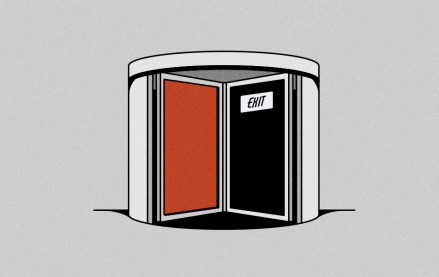Marketing Briefing: Marketers push for more flexible retail media deals amidst economic uncertainty

This Future of Marketing Briefing covers the latest in marketing for Digiday+ members and is distributed over email every Friday at 10 a.m. ET. More from the series →
As if the retail media boom isn’t under enough scrutiny, new tariffs and talk of a potential economic recession have sparked more questions about the negotiation process that is known as joint business planning (JBP).
Already, some advertisers have started to walk away from the negotiation table with retailers, citing concerns over transparency, standardization and measurement. Now, as economic headwinds threaten consumer spending, and in turn marketing budgets, agency execs say brand clients are more hesitant than ever to sign JBP commitments.
“If I was a brand, I’d be cautious about signing anything this year unless there’s extreme outs and all this stuff,” said Boris Litvinov, president at ad agency Left Off Madison. “I wouldn’t be putting all my money into any basket — not only retail media, but JBPs in general.”
Overall, agency execs say it’s rare that brand clients upend their retail media commitments over economic concerns, which have ebbed and flowed over the last few years. However, expect to see more flexible terms in contracts in retail media and beyond as economic uncertainty, and more notably, tariffs, loom.
While not manning the JBP negotiations herself, Sammy Rubin, vp of integrated media at digital marketing agency Wpromote, said in client conversations, that there’s a sense that brands “will be looking for more flexibility there as a pressure release valve [in their JBPs] for potential increased pricing depending on how the tariffs manifest for their particular business.”
Ideally, that flexibility extends to “no penalty for not reaching spend,” added Hillary Kupferberg, vp of performance marketing at Exverus Media. However, she added, each JBP deal can look different depending on the retailer and brand advertisers. Meaning, flexibility in JBP deals could range from no penalty for one advertiser’s JBP deal and better incentives to keep spending for another advertiser’s JBP deal.
Tensions have been mounting for some time between advertisers and retail media networks. On one hand, RMNs are asking for increased ad spend year-over-year to fuel the $140 billion global ad business that is retail media, per 2024 eMarketer figures. Meanwhile, advertisers have scrutinized retail media networks, pushing for transparency and measurable results to determine if the juice is worth the squeeze.
“There’s just a really high expectation right now, and coupled with economic uncertainty, brands are just a little bit hesitant to make that commitment,” said Leah Sallen, managing director of commerce media at VML, a creative agency.
Marketers are still trying to read the tea leaves as to what the proposed tariffs could mean for production costs, supply chain issues and more. Some early indicators of economic turbulence include dips in the S&P 500 and Nasdaq, which have sparked recession fears.
At the same time, President Donald Trump’s tariffs are expected to go into effect Wednesday, impacting auto manufacturers, computer and electronic products, furniture brands and other industries hinged on imported parts. Household necessity brands, like food, cleaning products and the like, are less likely to be impacted by economic uncertainty, per marketers. However, industries expected to be impacted by the tariffs may push for more flexibility.
Last winter, at least one Left Off Madison client in the consumer electronic brand industry stated there were plans to pull away and deprioritize retail media spend due to economic uncertainty. Anecdotally, Rob Douglas, CEO and co-founder of Left Off Madison, said, the client planned to do enough to keep the lights on and keep things status quo with the retail media network, but discretionary funds would be held closer to the chest. This client, previously, had been heavily dependent on retail media networks for performance marketing, he said.
In the marketing and advertising industry, it’s well-known that marketing budgets are often first to the chopping block whenever consumers tighten their belts, leaving brands trying to make up for lost revenue. That said, as we reported in our last Marketing Briefing, the belt tightening in 2008 looks quite different from today’s budget shifts. How marketers spent their ad dollars and the long-term commitments required made it harder for marketers to move quickly and get the flexibility they needed during the last major marketing downturn. This time round, marketers are hedging their bets and pushing for flexibility.
This current bout of uncertainty has marketers looking more closely at all contract and JBP negotiations, retail media networks and beyond, agency execs say. Meanwhile, marketers are still working to understand what the potential fallout effects of the tariffs, trade wars and other economic headwinds will be.
“My personal hunch is telling me that this year is going to be the year of reckoning, not only for retail media but for JBPs in general because of all this external pressure,” Litvinov said.
3 Questions with Stephanie Sherman, CMO of sports betting company DraftKings
DraftKings has launched a fresh responsible gaming campaign, “it’s more fun when it’s for fun” during March Madness. Which media channels are you focusing on?
It’s a holistic campaign. We’re really focused on reach vehicles, certainly where sports fans are consuming content with partners like ESPN, as well as through the audio, podcast and radio space, in addition to digital [channels].
How big a portion of your budget goes on podcasting?
I can’t speak to specifics on [our] media mix, but will say that it has been very effective for us. We see strong performance when we have the ability to be contextual and be relevant. In the podcast space, where we have talent that listeners are really connecting to — and they authentically love and play our products and can speak to their audience in a really engaging way — that’s where we see really strong results to bring that to life, whether it’s the Kelce brothers with New Heights or even through our partnerships with iHeart Radio.
Are those activated directly with SiriusXM and Spotify and their peers, or do you invest any audio spend programmatically?
We have direct relationships across the board. When we look to activate, it [means] partnering with our agency Veritone, as well as directly with companies like iHeart and Spotify to to make it come to life.
By the numbers
At this point in the AI hype cycle, media and marketing agencies alike have found internal use cases for the tech, mostly to automate routine campaign tasks. However, it remains to be seen if the technology is good enough to produce creative content. New data by digital experience agency Revel and Gen Z research and strategy lab DCDX, reveals that AI has become essential for Gen Z entrepreneurs, creating an opportunity for brands. See key findings below:
- Gen Z entrepreneurs lead the pack as adopters and innovators in the application of AI tech, as 72% use AI and 88% report increased productivity.
- Among all consumers surveyed, 64% report using AI last year and 61% engage with it weekly.
- The most appealing value survey respondents desired from brands were simplifying daily life (39%), enhancing learning (34%), and boosting productivity (33%). — Kimeko McCoy
Quote of the week
“It’s not enough for brands to just say all the great things they do to attract and retain their workforce. They have to show it, and one of the best ways to do that is by incorporating employee-generated content into their marketing strategy.”
— Jayde I. Powell, a social strategist and B2B LinkedIn creator, on why B2B marketers are banking on their own employees to create content for their brands.
What we’ve covered
- Advertisers are calling retail media networks bluff. Here’s what that means for contracts.
- Smaller retail media networks are trying to step out from the shadow of Amazon and Walmart
- This year’s March Madness must-have for brands? Athlete creators
More in Marketing

Pitch deck: How Amazon is recasting Twitch as a core part of its CTV pitch
Amazon is positioning Twitch as a defining asset in its CTV ambitions.

Netflix transforms former mall department stores into experiential venues
The location in Dallas opens this week, and one at the King of Prussia mall near Philadelphia opened last month.

Future of Marketing Briefing: AI has created a new talent paradox in programmatic agencies
The job isn’t execution anymore. AI handles that. The job is judgement.








